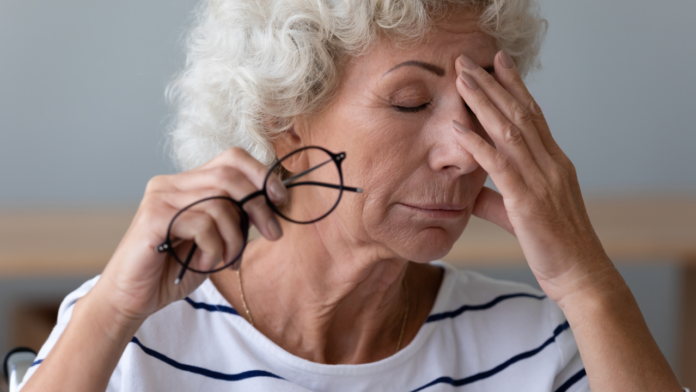Sponsored by: Renadyl™
If you are reading this article, chances are, you know someone with diabetes. It may be a friend, a family member, or even you. The year 2021 marked the 100th anniversary of the discovery of insulin. Before insulin was discovered, people with diabetes didn’t live long lives. Since then, we’ve come a long way in reducing the toll diabetes takes on people’s daily lives. Today, the number of people with diabetes is higher than it has ever been. It’s not just your grandparents you have to worry about. People are developing diabetes at younger ages and at higher rates. In fact, more than 37 million people in the United States have diabetes, and 1 out of 3 of them will develop diabetic retinopathy, the leading cause of severe vision loss and blindness among working-age American adults. By 2050, the number of people with diabetic retinopathy is estimated to nearly double, affecting over 14 million Americans. If you are living with diabetes, it is important to prevent vision loss because diabetes increases your risk for vision loss.
What is Diabetes?
Diabetes is a chronic(long-lasting) health condition that affects how your body turns food into energy. Most people’s bodies naturally produced the hormone insulin, which helps convert sugars from t he food we eat into energy that the body can use or store for later. When you have diabetes, your body either doesn’t make insulin or doesn’t use its insulin well, causing your blood sugar to rise. High blood sugar levels can cause serious health problems over time.
If you have diabetes, understand your risk and follow three simple steps to protect your vision and eye health.
Step 1: Manage Your ABCs:
It’s helpful to remember the alphabet when managing diabetes.
Managing your blood sugar, blood pressure, and cholesterol levels is the best way to lower your risk of vision loss.
- A1C: Manage your daily blood sugar levels and get a regular A1C test (this test measures your average blood sugar over a 2 to 3 month period).
- Blood pressure: Manage your blood pressure. It is recommended to have a pressure below 140/90 mm Hg (or the target set by your doctor).
- Cholesterol: Keep your cholesterol levels less than 200mg/dL.
Step 2: Don’t Smoke
Smoking can raise your blood sugar – which makes it harder to manage your blood sugar levels. If you have diabetes and smoke, you’re more likely to develop diabetes -related complications, including heart disease, kidney disease, nerve damage, and diabetic retinopathy. The more you smoke, the higher your risk of developing a complication from diabetes.
Step 3: Protect Your Eyes
People with diabetes can develop diabetes-related eye complications without having any symptoms. Regular eye exams are important to detect diabetic retinopathy at an early and treatable stage. People with vision loss caused by diabetes experience trouble with:
- Being physically active
- Reading nutrition labels
- Preparing insulin injections
- Checking blood sugar
They also experience a reduced quality of life due to:
- Not being able to work
- Fewer social interactions
- Loss of independence and mobility
- Loss of ability to do daily activities
Get an annual dilated eye exam to prevent vision loss or blindness so you can keep doing the things that are important to you.
Raising Diabetes Awareness:
Because type 2 diabetes increases your risk of severe illness from COVID-19, it is important to raise awareness about diabetes and how it can affect almost every part of your body. If you are living with diabetes, make sure to take good care of yourself by managing your ABCs, eating healthy food, and getting regular physical activity. If you have diabetes and are experiencing vision problems or have any questions concerning your vision speak to your primary care physician or eye doctor.
Learn more about our sponsor Renadyl here https://bit.ly/3sZDWbb
About the author
Steven Belcher, RN, MSN, MS, is a dedicated kidney advocate who began his journey 20 years ago as a dialysis nurse. This job inspired him to help as many people with kidney disease as he could. Not only did he spend two decades caring for a patient’s physical and emotional needs in a clinical setting, but he also educated the public on the risk factors of kidney disease. Some of his many philanthropic successes include being a keynote speaker at the National Association of Nephrology Technicians/ Technologists (NANT), presenting at community spaces, and launching radio shows.
He now focuses his time entirely on his organization Urban Kidney Alliance, which educates the public about kidney disease. His goal? To lower rates of Chronic Kidney Disease in urban communities in Baltimore, Maryland, across the country, and globally through education and collaboration.
Steve has also written the book “HOW TO SURVIVE OUTPATIENT HEMODIALYSIS: A GUIDE FOR PATIENTS WITH KIDNEY FAILURE.” You can read the book review here.
*These statements have not been evaluated by the US Food and Drug Administration. This information is not intended to diagnose, treat, cure, or prevent any disease. Always consult with a qualified healthcare professional prior to beginning any diet or exercise program or taking any dietary supplement. The content on our website is for informational and educational purposes only.




